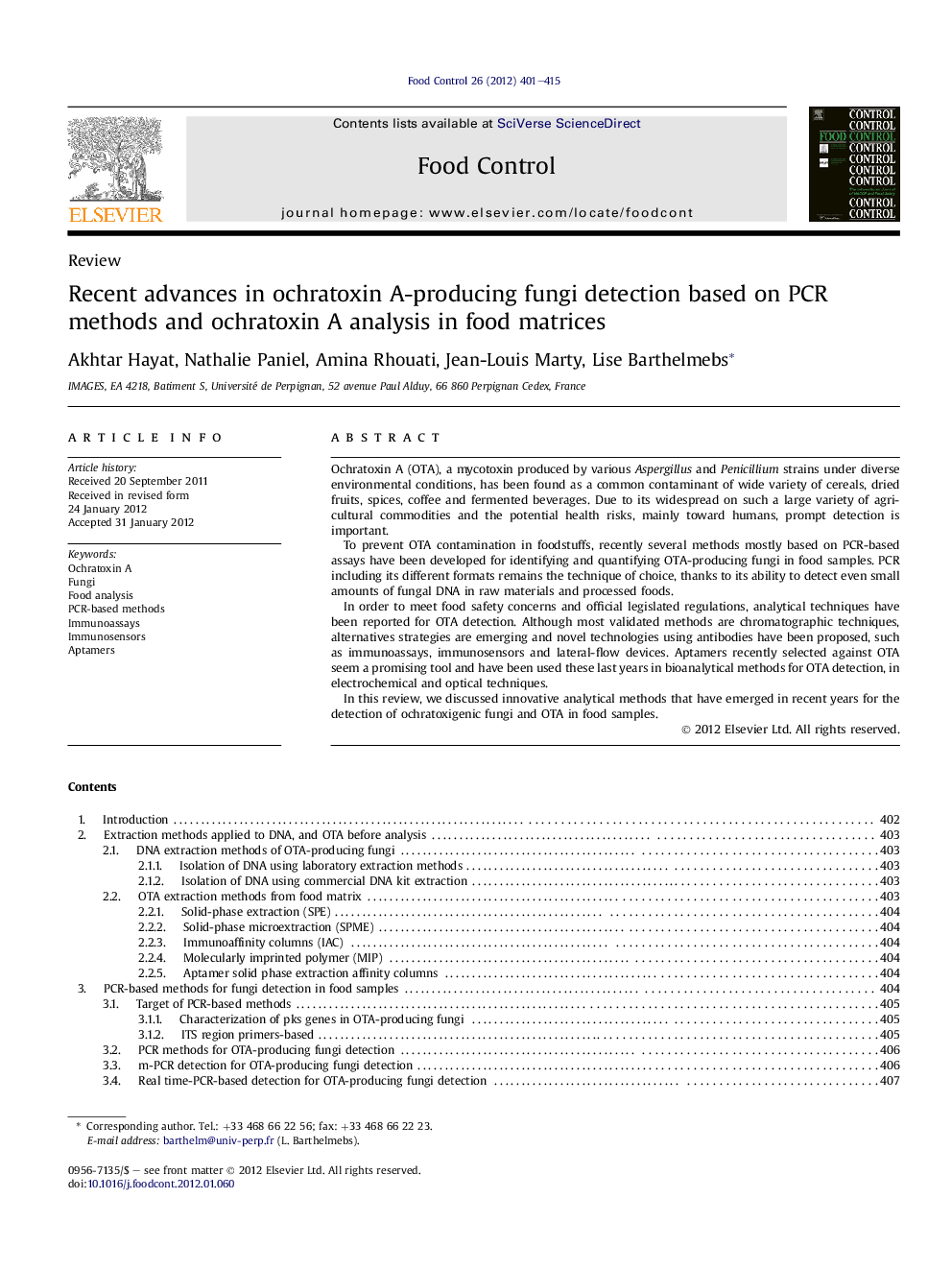| Article ID | Journal | Published Year | Pages | File Type |
|---|---|---|---|---|
| 6393884 | Food Control | 2012 | 15 Pages |
Ochratoxin A (OTA), a mycotoxin produced by various Aspergillus and Penicillium strains under diverse environmental conditions, has been found as a common contaminant of wide variety of cereals, dried fruits, spices, coffee and fermented beverages. Due to its widespread on such a large variety of agricultural commodities and the potential health risks, mainly toward humans, prompt detection is important.To prevent OTA contamination in foodstuffs, recently several methods mostly based on PCR-based assays have been developed for identifying and quantifying OTA-producing fungi in food samples. PCR including its different formats remains the technique of choice, thanks to its ability to detect even small amounts of fungal DNA in raw materials and processed foods.In order to meet food safety concerns and official legislated regulations, analytical techniques have been reported for OTA detection. Although most validated methods are chromatographic techniques, alternatives strategies are emerging and novel technologies using antibodies have been proposed, such as immunoassays, immunosensors and lateral-flow devices. Aptamers recently selected against OTA seem a promising tool and have been used these last years in bioanalytical methods for OTA detection, in electrochemical and optical techniques.In this review, we discussed innovative analytical methods that have emerged in recent years for the detection of ochratoxigenic fungi and OTA in food samples.
